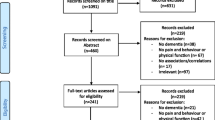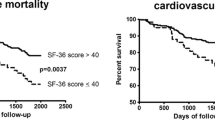Abstract
Patients affected by stroke, particularly subacute stroke patients, often complain of neuropathic pain (NP), which may severely impair their quality of life. The aim of this exploratory study was to characterize NP and to investigate whether there is a correlation between NP and serum brain-derived neurotrophic factor (BDNF) and serum markers of oxidative stress. We enrolled 50 patients divided in subacute (< 90 days from stroke onset) and chronic (> 90 and 180 < days from stroke onset). The Barthel Index, Deambulation Index, and Short Form 36 were used to assess the patients’ degree of disability and quality of life. Pain-specific tools, namely the Numeric Rating Scale (NRS), Neuropathic Pain Diagnostic questionnaire (DN4), and Neuropathic Pain Symptom Inventory (NPSI), were also used. Serum levels of BDNF and markers of oxidative stress and of metal status were evaluated: copper, iron, transferrin, ferritin, ceruloplasmin concentration (iCp) and activity (eCp), Total Antioxidant status (TAS), Cp/Tf ratio, eCp/iCp ratio, and non-ceruloplasmin bound copper (Non-Cp Cu). We found the highest value of BDNF in subacute with NP (DN4 score ≥ 4). The TAS, Cp/Tf ratio, and eCp/iCp not only fell outside the normal reference range in a high percentage of subacute and chronic patients, but were also found to be related to specific NP symptoms. These preliminary results reveal altered BDNF and oxidative stress indices in subacute stroke patients who complain of NP. These investigative findings may shed more light on the mechanisms underlying NP and consequently lead to a more tailored therapeutic and/or rehabilitation procedure of subacute stroke patients.


Similar content being viewed by others
References
Abe A, Yamashita S, Noma A (1989) Sensitive, direct colorimetric assay for copper in serum. Clin Chem 35:552–554
Altamura C, Squitti R, Pasqualetti P et al (2009) Ceruloplasmin/transferrin system is related to clinical status in acute stroke. Stroke 40:1282–1288
Apolone G, Mosconi P (1998) The Italian SF-36 health survey: translation, validation and norming. J Clin Epidemiol 51:1025–1036
Aprile I, Di Stasio E, Romitelli F et al (2008) Effects of rehabilitation on quality of life in patients with chronic stroke. Brain Inj 22:451–456
Aprile I, Briani C, Pazzaglia C et al (2015) Pain in stroke patients: characteristics and impact on the rehabilitation treatment. A multicenter cross-sectional study. Eur J Phys Rehabil Med 51:725–736
Berchtold N, Chinn G, Chou M et al (2005) Exercise primes a molecular memory for brain-derived neurotrophic factor protein induction in the rat hippocampus. Neuroscience 133:853–861
Bielli P, Calabrese L (2002) Structure to function relationships in ceruloplasmin: a “moonlighting” protein. Cell Mol Life Sci 59:1413–1427
Bouhassira D, Attal N, Fermanian J et al (2004) Development and validation of the neuropathic pain symptom inventory. Pain 108:248–257
Bouhassira D, Attal N, Alchaar H et al (2005) Comparison of pain syndromes associated with nervous or somatic lesions and development of a new neuropathic pain diagnostic questionnaire (DN4). Pain 114:29–36
Burkitt MJ (2001) A critical overview of the chemistry of copper-dependent low density lipoprotein oxidation: roles of lipid hydroperoxides, alpha-tocopherol, thiols, and ceruloplasmin. Arch Biochem Biophys 394:117–135
Carbonell T, Rama R (2007) Iron, oxidative stress and early neurological deterioration in ischemic stroke. Curr Med Chem 14:857–874
Di Napoli M, Parry-Jones AR, Smith CJ et al (2014) C-reactive protein predicts hematoma growth in intracerebral hemorrhage. Stroke 45:59–65
Downie WW, Leatham Pa, Rhind VM et al (1978) Studies with pain rating scales. Ann Rheum Dis 37:378–381
Ellis A, Bennett DLH (2013) Neuroinflammation and the generation of neuropathic pain. Br J Anaesth 111:26–37
Folstein MF, Folstein SE (1975) “Mini-mental state”. A practical method for grading the cognitive state of patients for the clinician. J Psychiatr Res 12:189–198
Fox PL, Mazumder B, Ehrenwald E, Mukhopadhyay CK (2000) Ceruloplasmin and cardiovascular disease. Free Radic Biol Med 28:1735–1744
Harrison RA, Field TS (2015) Post stroke pain: identification, assessment, and therapy. Cerebrovasc Dis 39:190–201
Higgins T (1981) Novel chromogen for serum iron determinations. Clin Chem 27:1619–1620
Jung K-H, Ahn T-B, Jeon BS (2005) Wilson disease with an initial manifestation of polyneuropathy. Arch Neurol 62:1628–1631
Khan N, Smith MT (2015) Neurotrophins and neuropathic pain: role in pathobiology. Molecules 20:10657–10688
Korner-Bitensky N, Mayo N, Cabot R et al (1989) Motor and functional recovery after stroke: accuracy of physical therapists’ predictions. Arch Phys Med Rehabil 70:95–99
Kozlov AV, Sergienko VI, Vladimirov IuA, Azizova OA (1984) The antioxidant system of transferrin-ceruloplasmin in experimental hypercholesterolemia. Biull Eksp Biol Med 98:668–671
Lai M, Wang D, Lin Z, Zhang Y (2016) Small molecule copper and its relative metabolites in serum of cerebral ischemic stroke patients. J Stroke Cerebrovasc Dis 25:214–219
Lan X, Zhang M, Yang W et al (2014) Effect of treadmill exercise on 5-HT, 5-HT1A receptor and brain derived neurophic factor in rats after permanent middle cerebral artery occlusion. Neurol Sci 35:761–766
Lehmann HP, Schosinsky KH, Beeler MF (1974) Standardization of serum ceruloplasmin concentrations in international enzyme units with o dianisidine dihydrochloride as substrate. Clin Chem 20:1564–1567
Li L, Xian CJ, Zhong JH, Zhou XF (2006) Upregulation of brain-derived neurotrophic factor in the sensory pathway by selective motor nerve injury in adult rats. Neurotox Res 9:269–283
Mahoney F, Barthel D (1965) Functional evaluation: the Barthel index. Md State Med J 14:61–65
Mang CS, Campbell KL, Ross CJD, Boyd La (2013) Promoting neuroplasticity for motor rehabilitation after stroke: considering the effects of aerobic exercise and genetic variation on brain-derived neurotrophic factor. Phys Ther 93:1707–1716
Nobili V, Siotto M, Bedogni G et al (2013) Levels of serum ceruloplasmin associate with pediatric nonalcoholic fatty liver disease. J Pediatr Gastroenterol Nutr 56:370–375
Padua L, Briani C, Jann S et al (2009) Validation of the Italian version of the neuropathic pain symptom inventory in peripheral nervous system diseases. Neurol Sci 30:99–106
Paolucci S, Iosa M, Toni D et al (2016) Prevalence and time course of post-stroke pain: a multicenter prospective hospital-based study. Pain Med (United States) 17:924–930
Ploughman M, Windle V, MacLellan CL et al (2009) Brain-derived neurotrophic factor contributes to recovery of skilled reaching after focal ischemia in rats. Stroke 40:1490–1495
Rice-Evans C, Miller N (1994) Total antioxidant status in plasma and body fluids. Methods Enzym 234:274–293
Rusanescu G, Mao J (2015) Immature spinal cord neurons are dynamic regulators of adult nociceptive sensitivity. J Cell Mol Med 19:2352–2364
Schosinsky K, Lehmann H, Beeler M (1974) Measurement of ceruloplasmin from its oxidase activity in serum by use of o-dianisidine dihydrochloride. Clin Chem 20:1556–1563
Shu XQ, Mendell LM (1999) Neurotrophins and hyperalgesia. Proc Natl Acad Sci USA 96:7693–7696
Simó J, Joven J, Clivillé X, Sans T (1994) Automated latex agglutination immunoassay of serum ferritin with a centrifugal analyzer. Clin Chem 40:625–629
Siniscalco D, Giordano C, Rossi F et al (2011) Role of neurotrophins in neuropathic pain. Curr Neuropharmacol 9:523–529
Siotto M, Pasqualetti P, Marano M, Squitti R (2014) Automation of o-dianisidine assay for ceruloplasmin activity analyses: usefulness of investigation in Wilson’s disease and in hepatic encephalopathy. J Neural Transm 121:1281–1286
Siotto M, Simonelli I, Pasqualetti P et al (2016) Association between serum ceruloplasmin specific activity and risk of Alzheimer’s disease. J Alzheimers Dis 50:1181–1189
Skikne BS, Flowers CH, Cook JD (1990) Serum transferrin receptor: a quantitative measure of tissue iron deficiency. Blood 75:1870–1876
Squitti R (2012) Copper dysfunction in Alzheimer’s disease: from meta-analysis of biochemical studies to new insight into genetics. J Trace Elem Med Biol 26:93–96
Squitti R, Ghidoni R, Siotto M et al (2014) Value of serum nonceruloplasmin copper for prediction of mild cognitive impairment conversion to Alzheimer disease. Ann Neurol 75:574–580
Tan ECTH, Bahrami S, Kozlov AV et al (2009) The oxidative response in the chronic constriction injury model of neuropathic pain. J Surg Res 152:84–88
Walshe JM (2003) Wilson’s disease: the importance of measuring serum caeruloplasmin non-immunologically. Ann Clin Biochem 40:115–121
Wolf P (1982) Ceruloplasmin: methods and clinical use. Crit Rev Clin Lab Sci 17:229–245
Yowtak J, Lee KY, Kim HY et al (2011) Reactive oxygen species contribute to neuropathic pain by reducing spinal GABA release. Pain 152:844–852
Author information
Authors and Affiliations
Corresponding author
Ethics declarations
Funding
This research did not receive any specific grant from funding agencies in the public, commercial, or not-for-profit sectors.
Conflict of interest
All authors declare that they have no conflict of interest. All authors declare no conflicts exist.
Rights and permissions
About this article
Cite this article
Siotto, M., Aprile, I., Simonelli, I. et al. An exploratory study of BDNF and oxidative stress marker alterations in subacute and chronic stroke patients affected by neuropathic pain. J Neural Transm 124, 1557–1566 (2017). https://doi.org/10.1007/s00702-017-1805-9
Received:
Accepted:
Published:
Issue Date:
DOI: https://doi.org/10.1007/s00702-017-1805-9




